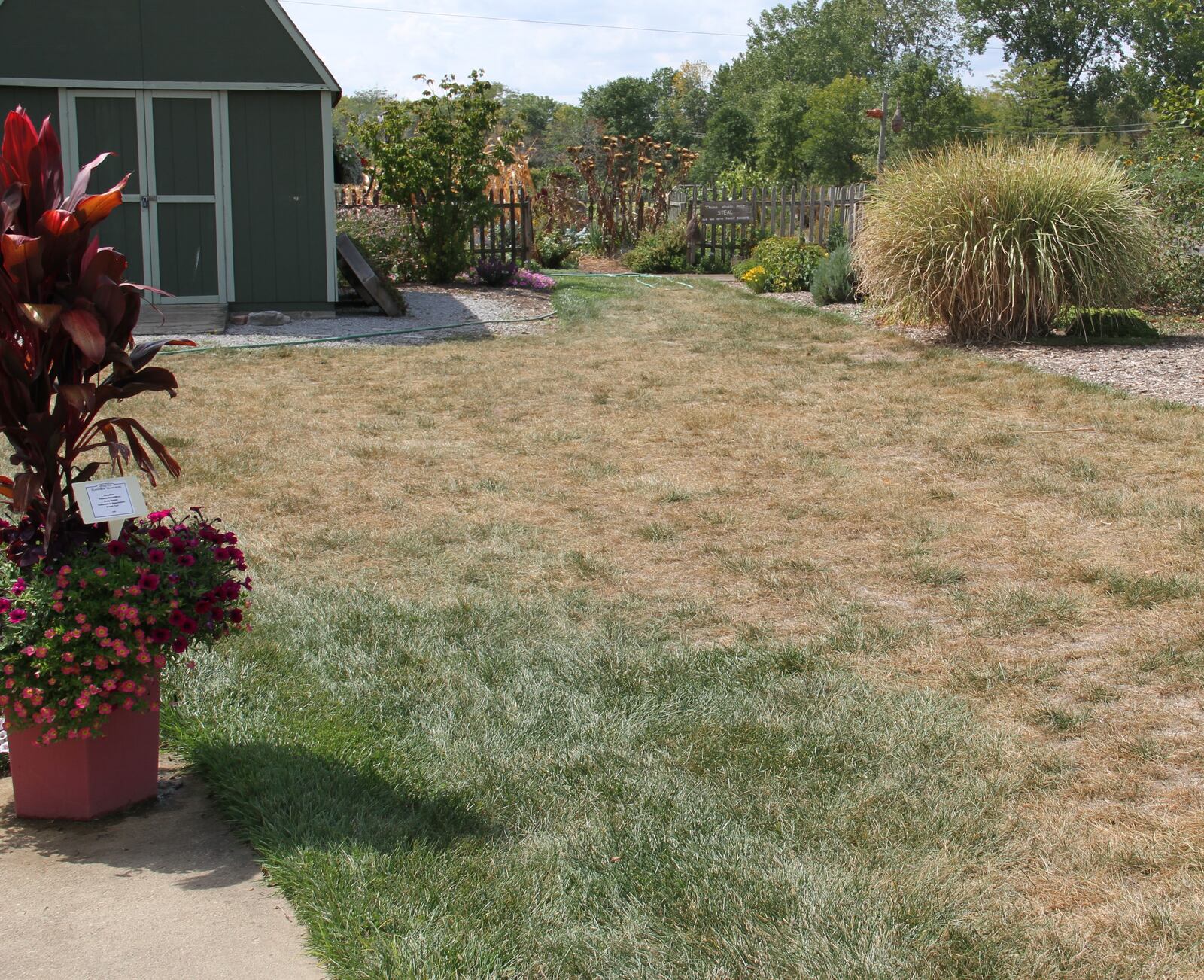With a few scattered showers here and there, it might seem like relief is on the way, but the reality is, Midland is still dealing with dry conditions. We’re seeing more and more signs of drought stress across the area. While some rain has helped, it hasn’t been enough to make up for the dry stretch we’ve been in. Scattered rain is expected on and off this week but with temperatures expected to climb into the 90s over the next few days, we’re heading into a critical time for lawns and landscapes.
Here’s what to keep an eye out for—and how to help your yard stay healthy through the heat.
5 Signs Your Lawn Is Stressed from Drought
- Grass looks dull or bluish-gray
Healthy grass has a vibrant green color. If it starts to take on a muted, grayish tint, that’s an early sign of drought stress. - Footprints or mower tracks linger
Walk across your lawn and check for footprints. If the grass doesn’t bounce back right away, it’s struggling to retain moisture. - Blades start to curl or wilt
Grass blades will curl inward or begin to wilt in an effort to conserve water, another sign it needs a deep drink. - Dry, crunchy feel underfoot
A soft lawn is a healthy lawn. If your grass feels crispy or brittle when you walk across it, it’s past due for watering. - Browning or bare patches
When lawns or landscape plants start to go dormant, you may notice thinning areas, browning foliage, or exposed soil.
5 Signs Your Plants are Stressed from Drought
1. Wilting or Drooping Leaves (Especially Midday) Even if the soil appears moist, plants under drought stress will often wilt during the heat of the day. This is the plant’s way of conserving moisture. If wilting persists into the evening or early morning, it’s a clearer sign of stress.
2. Leaf Curling or Rolling Many plants (especially turfgrass) curl their leaves lengthwise to reduce surface area and slow water loss. It’s one of the first subtle indicators that your landscape needs attention.
3. Browning or Scorching at Leaf Edges. Look for “leaf scorch” which is browning around the edges or between the veins of leaves. This is especially common in trees, shrubs, and perennials, and is a direct result of insufficient water reaching the leaf tissue.
4. Premature Leaf Drop or Yellowing. When stressed, plants may drop their leaves early to conserve resources. In lawns, grass may go dormant and turn yellow or brown, this is a protective response, not necessarily a sign of death, but it does mean the plant is under duress.
5. Slow or Stunted Growth. Plants that are not getting enough water will pause or dramatically slow their growth. You may notice fewer flowers, smaller leaves, or fewer new shoots or buds.
How to Keep Your Landscape Healthy During Dry Weather
We’re often asked what the best approach is when rain is scarce. Here are a few tried-and-true tips we recommend to help your lawn and landscape ride out the drought:
- Water early and deeply
The best time to water is early in the morning, between 4–10 a.m. Watering deeply (about one inch per week) encourages stronger roots and helps the soil hold moisture longer. - Adjust your irrigation system
Use the “seasonal adjust” feature on your sprinkler system and add 50% more time during this drought period. Midland predominantly has a sandy subroutine structure since it’s heavily wooded. This makes it hard for the lawns to retain moisture.
- Adjust your mowing routine
Raise your mower deck to leave grass a little taller—around 3 to 4 inches. Taller grass helps shade the soil and reduce evaporation. Avoid mowing when your lawn is already showing signs of stress. - Use mulch to your advantage
Mulching around trees, shrubs, and flower beds helps lock in moisture, regulate soil temperature, and reduce weeds competing for water. - Keep an eye on container plants
Pots dry out faster than planting beds. You may need to water containers daily during high heat, especially those in full sun. - Sprinkler systems alone are not enough.
This is when dry spots on your lawn will appear, showing you where your sprinklers don’t have enough coverage. It’s OK, don’t panic. A little extra hand watering is effective.
What’s Ahead
Looking at the forecast, we’re heading into several days in the 90s with high humidity and only scattered chances of rain. While the recent heavy rainfall delivered 2.5″ of water, giving your lawn and garden a much-needed boost, don’t be fooled. The heat is coming, and early next week is shaping up to be hot, hot, hot! Now’s the time to act! Get ahead of the dry conditions before they take a lasting toll. If your lawn starts to brown, don’t panic, it’s not dead, just going dormant. Keep watering. If your plants begin to dry out, curl, or shrivel, don’t worry, just hand water. Sprinklers alone can’t keep up with multiple days of 90-degree temps, so stay alert and be proactive!
If you’re unsure whether your landscape needs water, or just want a second opinion, we’re always here to help. Whether it’s adjusting irrigation systems, diagnosing plant stress, or putting together a drought-smart game plan, our team’s just a call away.
Stay cool out there,
– The Reder Landscaping Team

